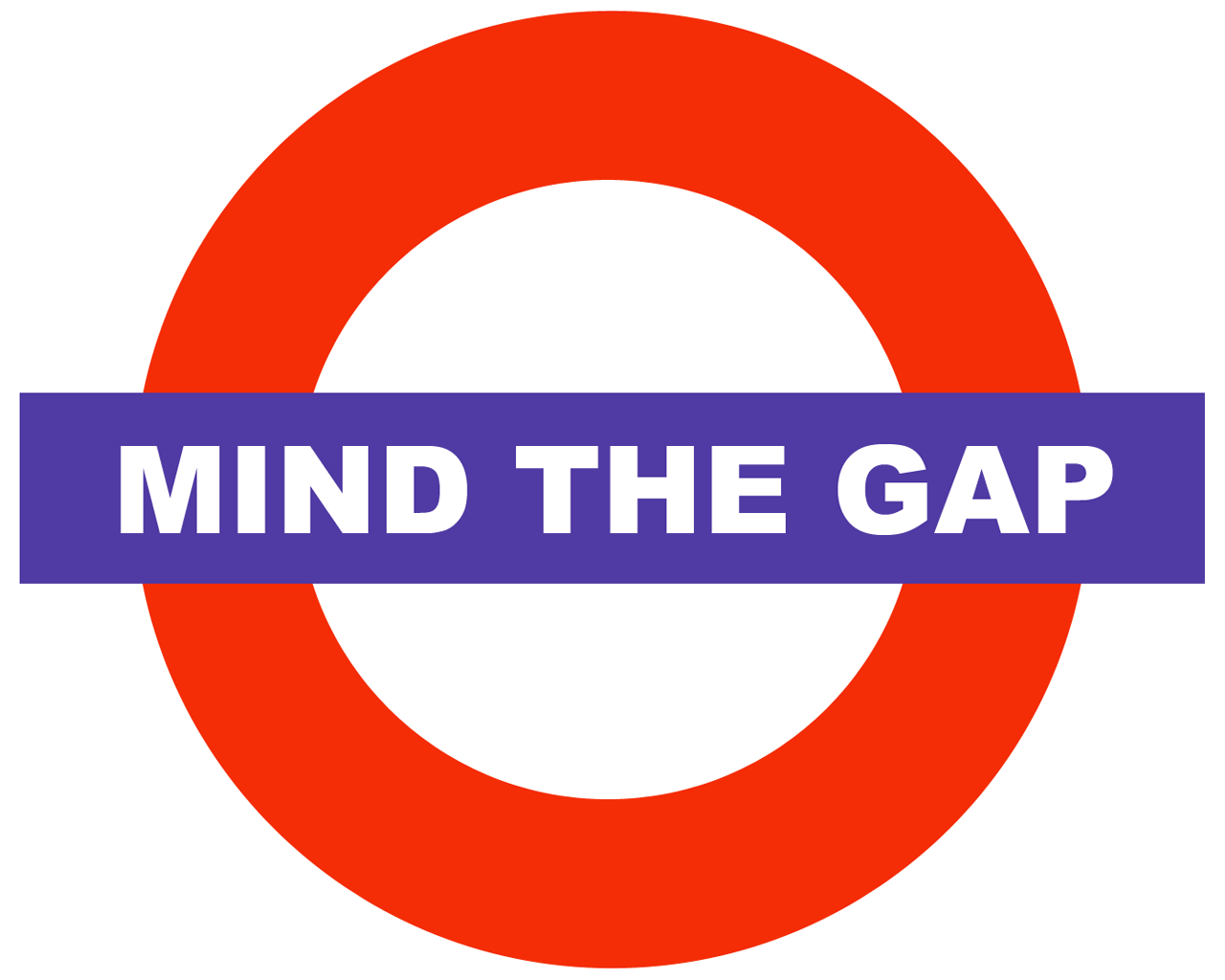In August 2014 there was a wonderful story of how “people power” had freed a man in Perth, whose leg had become caught in the gap between a platform and train on his morning commute. You can watch the video here. What struck me about this story was that people taking part in their “regular” commute noticed something out of the ordinary and used their combined energy to free the man. Someone alerted the driver to make sure that the train didn’t move, staff then asked passengers to help and in tandem they rocked the train backwards from the platform so it tilted and his leg could be freed. It made me think about the gaps people are stuck in, that exist all around us, that have become so routine, that we are habituated to, and fail to notice.
One of the biggest gaps is in the health outcomes between Indigenous and non-indigenous people in settler nations. Oxfam notes that Australia equals Nepal for the world’s greatest life expectancy gap between Indigenous and non-Indigenous people. This is despite Australians enjoying one of the highest life expectancies of any country in the world. Indigenous Australians (who numbered 669,900 people in 2011, ie 3% of the total population) live 10-17 years less than other Australians. In the 35–44 age group, Indigenous people die at about 5 times the rate of non-Indigenous people. Babies born to Aboriginal mothers die at more than twice the rate of other Australian babies, and Aboriginal and Torres Strait Islander people experience higher rates of preventable illness such as heart disease, kidney disease and diabetes.
One of the most galvanising visions for addressing the health and social disparities between Indigenous and non-indigenous people is The Close the Gap campaign aiming to close the health and life expectancy gap between Aboriginal and Torres Strait Islander peoples and non-Indigenous Australians within a generation. By 2030 any Aboriginal or Torres Strait Islander child born in Australia will have the same opportunity as other Australian children to live a long, healthy and happy life.
Nurses play an important role in creating a more equitable society and have been forerunners in the field of cultural safety and competence. For the gap to close, nurses need an understanding of health that includes social, economic, environmental and historical relations. Cultural safety from Aotearoa New Zealand has been an invaluable tool for me as nurse for analysing this set of relations. However, as a newcomer to Australia, I have a lot to learn about what cultural competency means here and how I fulfil my responsibilities as a nurse educator to Aboriginal and Torres Strait Islander peoples. To that end, this blog piece focuses on some of the frameworks in nursing that might enable nurses to close the gap. I am particularly interested in frameworks that enable nurses to widen the lens of care beyond the individual and consider service users in the context of their families and communities and broader social and structural inequities. I’m also interested in policy frameworks that can support practice.

A social determinants of health approach takes into account “the circumstances in which people are born, grow up, live, work and age, and the systems put in place to deal with illness. These circumstances are in turn shaped by a wider set of forces: economics, social policies, and politics” (WHO, 2010). A health equity lens has also been invaluable to my own practice, it refers to the absence of systematic disparities in health (or in the major social determinants of health) between groups with different social advantage/disadvantage. Social inequalities refer to “relatively long-lasting differences among individuals or groups of people that have implications for individual lives” (McMullin, 2010, p.7). While an inequity, refers to an unjust distribution of resources and services. “equity means social justice” (see, Braverman 2003). The term “social and structural inequities,” refers to unfair and avoidable ways in which members of different groups in society are treated and/or their ability to access services.
Principle Four of the New Zealand Nursing Council: Guidelines for Cultural safety in Nursing and Midwifery Education (2011) pay great attention to the issue of power:
PRINCIPLE FOUR Cultural safety has a close focus on:
4.1 understanding the impact of the nurse as a bearer of his/her own culture, history, attitudes and life experiences and the response other people make to these factors
4.2 challenging nurses to examine their practice carefully, recognising the power relationship in nursing is biased toward the provider of the health and disability service
4.3 balancing the power relationships in the practice of nursing so that every consumer receives an effective service
4.4 preparing nurses to resolve any tension between the cultures of nursing and the people using the services
4.5 understanding that such power imbalances can be examined, negotiated and changed to provide equitable, effective, efficient and acceptable service delivery, which minimises risk to people who might otherwise be alienated from the service.
The Australian Code of Ethics for nurses and midwives in Australia also pays attention to the role of nurses in having a moral responsibility to protect and safe guard human rights as means to improving health outcomes and having concern for the structural and historical:
The nursing profession recognises the universal human rights of people and the moral responsibility to safeguard the inherent dignity and equal worth of everyone. This includes recognising, respecting and, where possible, protecting the wide range of civil, cultural, economic, political and social rights that apply to all human beings.
The nursing profession acknowledges and accepts the critical relationship between health and human rights and ‘the powerful contribution that human rights can make in improving health outcomes’. Accordingly, the profession recognises that accepting the principles and standards of human rights in health care domains involves recognising, respecting, actively promoting and safeguarding the right of all people to the highest attainable standard of health as a fundamental human right, and that ‘violations or lack of attention to human rights can have serious health consequences’.
In recognising the linkages and operational relationships that exist between health and human rights, the nursing profession respects the human rights of Australia’s Aboriginal and Torres Strait Islander peoples as the traditional owners of this land, who have ownership of and live a distinct and viable culture that shapes their world view and influences their daily decision making. Nurses recognise that the process of reconciliation between Aboriginal and Torres Strait Islander and non-indigenous Australians is rightly shared and owned across the Australian community. For Aboriginal and Torres Strait Islander people, while physical, emotional, spiritual and cultural wellbeing are distinct, they also form the expected whole of the Aboriginal and Torres Strait Islander model of care.
The Code stops short of using words like colonisation and racism, but the National Aboriginal Community Controlled Health Organisation background paper “Creating the Cultural Safety Training Standards and Assessment Paper” (2011, p. 9) points out that awareness and sensitivity training, result in individuals becoming more aware of cultural, social and historical factors and engaging in self-reflection however if there isn’t an institutional response and the responsibilities for institutional racism remain individualised:
Even if racism is named, the focus is on individual acts of racial prejudice and racial discrimination. While historic overviews may be provided, the focus is again on the individual impact of colonization in this country, rather than the inherent embedding of colonizing practices in contemporary health and human service institutions
The focus is on the individual and personal, rather than the historical and institutional nature of such individual and personal contexts.
the health and cultural wellbeing of Aboriginal and Torres Strait Islander peoples within mainstream health care settings warrant special attention. Cultural Respect is the: recognition, protection and continual advancement of the inherent rights, cultures and tradition of Aboriginal and Torres Strait Islander Peoples. …. [it] is about shared respect ….[and] is achieved when the health system is a safe environment for Aboriginal and Torres Strait Islander peoples and where cultural differences are respected. It is commitment to the principle that the construct and provision of services offered by the Australian health care system will not compromise the legitimate cultural rights, values and expectations of Aboriginal and Torres Strait Islander peoples. The goal is to uphold the rights of Aboriginal and Torres Strait Islander peoples to maintain, protect and develop their culture and achieve equitable health outcomes.
Knowledge and awareness, where the focus is on understandings and awareness of history, experience, cultures and rights of Aboriginal and Torres Strait Islander peoples.A focus on changed behaviour and practice to that which is culturally appropriate. Education and training and robust performance management processes are strategies to encourage good practice and culturally appropriate behavior.Strong relationships between Aboriginal and Torres Strait Islander peoples and communities, and the health agencies providing services to them. Here the focus is on the business practices of the organization to ensure they uphold and secure the cultural rights of Aboriginal and Torres Strait Islander peoples.Equity of outcomes for individuals and communities. Strategies include ensuring feedback on relevant key performance indicators and targets at all levels.
commitment to the principle that the construct and provision of services offered by the health system will not compromise the legitimate cultural rights, values and expectations of Aboriginal people. It is a recognition, appreciation and response to the impact of cultural diversity on the utilisation and provision of effective clinical care, public health and health system administration
The term ‘Cultural competence’ originates from Transcultural Nursing developed by Madeleine Leininger. Borrowing from anthropology, the aim was to develop a model that encouraged nurses to study and understand cultures other than their own. You can read my paper on the complementariness of cultural safety and competence here. Wellness for all: the possibilities of cultural safety and cultural competence in New Zealand. Betancourt, et al., 2002, p. v define it as:
the ability of systems to provide care to patients with diverse values, beliefs and behaviours, including tailoring delivery to meet patients’ social, cultural and linguistic needs
Dr Tom Calma’s (Aboriginal and Torres Strait Islander Commissioner ) Social Justice Report 2005 instigated a human rights-based approach Campaign to close the gap in life expectancy between Indigenous and non-Indigenous Australians (up to 17 years less than other Australians at the time). This report called on all Australian governments to commit to achieving equality of health status and life expectancy within a generation (by 2030).
A coalition drawn from Indigenous and non-Indigenous health and human rights organisations formed the Close the Gap Campaign, which was launched in April 2007 by Catherine Freeman and Ian Thorpe, the Campaign’s Patrons. The CTG Campaign is currently Co-Chaired by the Aboriginal and Torres Strait Islander Social Justice Commissioner Mick Gooda and Co- Chair of the National Congress of Australia’s First Peoples, Kirstie Parker. The Campaign Steering Committee is comprised of 32 health and human rights organisations. The members of the Campaign Steering Committee have worked collaboratively for approximately nine years to address Aboriginal and Torres Strait Islander health inequality through two primary mechanisms: attempting to gain public support of the issue and demanding government action to address it.
http://blogs.crikey.com.au/croakey/2013/08/04/youtube-an-excellent-resource-for-aboriginal-and-torres-strait-islander-health/Cultural competence video:
https://www.youtube.com/watch?v=JpzLzgeL2sADr Tom Calma – Cultural Competency
https://www.youtube.com/watch?v=tnYuTY0fn3s
http://amptoons.com/blog/files/mcintosh.htmlWhat kind of Asian are you?
https://www.youtube.com/watch?v=DWynJkN5HbQReverse racism, Aamer Rahman:
https://www.youtube.com/watch?v=dw_mRaIHb-M


